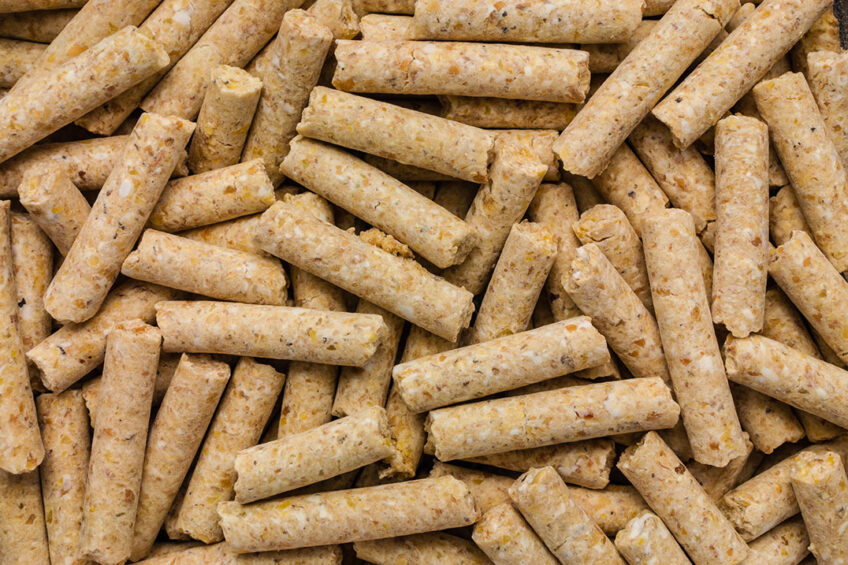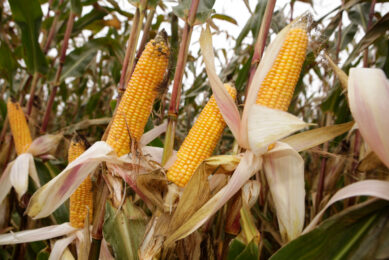Co-occurrence of mycotoxins in feeds and the impact on livestock

Recent multi-mycotoxin surveys indicate that mycotoxins do not occur individually and co-contamination of feed materials by more than one mycotoxin is the rule rather than the exception.
MYCOTOXIN SPECIAL 2023 – read all articles
Mycotoxins are secondary metabolites produced by fungi such as Aspergillus, Alternaria, Fusarium, Cladosporium, Claviceps, and Penicillium in crops while in the fields, during transportation, processing or in storage. Over 400 mycotoxins have been reported in feed and feed ingredients but the most frequently detected and of concern affecting animal health and productivity are aflatoxins (AFs); fumonisins (FBs); deoxynivalenol (DON); zearalenone (ZEN); T-2 toxin (T-2); and ochratoxin A (OTA).
Co-occurrence of mycotoxins in feeds
Co-occurrence of mycotoxins in feeds is observed since the different feed raw materials are generally colonised by more than one fungus and in addition, most toxigenic fungi can produce several mycotoxins simultaneously. Climate change also leads to changing abiotic and biotic factors that contribute to the co-occurrence of mycotoxins by providing environmental conditions that favour fungal proliferation and production of other new mycotoxins in different agricultural commodities and in places not reported before. Furthermore, long periods of drought due to climate change can make plants to undergo stress and become susceptible to diseases and pest invasion, fungal infection and subsequent contaminations by various mycotoxins.
There is likely an underestimation of the co-occurrence of mycotoxins in feed materials since not all known mycotoxins are tested, and sometimes the methods employed are not capable of detecting all mycotoxins present in the samples. Some research studies have shown that feed materials can be co-contaminated with 21 or more mycotoxins and over 60% of feed samples collected worldwide were found to be contaminated by more than one mycotoxin. Fumonisins, DON, and ZEN co-occur more often than other mycotoxin mixtures since they are produced by the same Fusarium fungal species (Figure 1).
Aflatoxins and FBs also co-occur in feed materials, especially in sub-Saharan Africa. Besides co-occurring with FBs, AFs can co-occur with ZEN and DON in feed materials. Furthermore, co-occurrences of AFs with FBs, ZEN, and DON have been reported and co-contamination of feed materials by the five major mycotoxins regulated by European Union (EU) and Codex Alimentarius Commission including FBs, DON, ZEN, AFs, and OTA have also been observed (Figure 1).
Neglected or modified mycotoxins also often co-occur with their parent mycotoxin compound but are rarely reported during mycotoxin surveys due to lack of standards and inadequate analytical methods to detect them. Prevalence of a given mycotoxins mixtures is governed by among other factors, climatic and geographical conditions as well as agricultural commodity tested.
Impact of mycotoxin mixtures on animal health
Risk assessment and most toxicological studies frequently report toxic effects of a single mycotoxin and not mycotoxin mixtures. However, toxicological interactions between mycotoxins can lead to enhanced toxicities compared to their individual toxicity and in some instances, this can make mycotoxins harmful to animals even at low levels. The type of mycotoxin interaction observed varies depending on the dose and mycotoxins mixtures the animal is exposed to, duration and route of exposure, investigated parameter, specie, age, sex, and nutritional status of the animal. Few toxicological studies conducted with mycotoxin mixtures have reported poorer health and productivity of animals than under single mycotoxicosis. Moreover, enhanced biotransfer of mycotoxins from feed to animal tissues and animal-source foods such as eggs and milk have also been observed when animals are exposed to mycotoxin mixtures. For example, toxicological interactions between AFs and ZEN or OTA resulted in more accumulation of ZEN and OTA residues in broiler chickens’ organs when compared to chickens fed individual mycotoxins. Long-term exposure to multiple mycotoxins even below EU regulatory or guidance limits have also been shown to cause detrimental health to chickens. Neglected or modified mycotoxins further contribute to enhanced toxicities on animals when they co-occur with their parent mycotoxin compound due to either their individual toxicological effects on animals or probable re-conversion to their parent mycotoxin compound in the gastrointestinal tract. More research on the interaction mechanisms of different mycotoxin mixtures is thus required to establish their combined effects on animals and biotransfer to animal-source foods.
Regulations of mycotoxin mixtures
Mycotoxin standards worldwide are mainly set based on risk assessment of a single mycotoxin yet studies show combined toxicities due to exposure to multiple mycotoxins. Preferred mycotoxins surveys should include simultaneous detection of various mycotoxins to provide sufficient information on risks associated with multiple mycotoxins present in a feed material. In addition, toxicological studies with mycotoxin mixtures are important during risk assessment to clarify if there is a need to consider the mycotoxin mixtures in feed materials when setting mycotoxin standards.
Mycotoxin mitigation in co-contaminated feeds
Various strategies have been employed during pre- and post-harvest stages to prevent or reduce mycotoxin accumulation in feed materials. The pre-harvest methods aim at preventing fungal contamination and hence formation of mycotoxins, however, these methods are not fully effective hence the need for post-harvest strategies including decontamination using mycotoxin detoxifiers. The detoxifiers act on mycotoxins already present in feeds and is being consumed by an animal. Development of most mycotoxin mitigation methods focus on their efficacy towards a single mycotoxin. However, the efficacy of a mycotoxin detoxifier can be affected when other mycotoxins are present in a feed material. Additionally, most mycotoxin detoxifiers may not be efficient to mitigate against most mycotoxins often present in feeds. Few studies conducted have shown that multi-component mycotoxin detoxifiers composed of one or more binding and/or modifying agents that are capable of acting on more than one mycotoxin are more effective in controlling multiple mycotoxins present in feed materials. Therefore, future studies should focus on such mycotoxin detoxifiers capable of acting on multiple mycotoxins.
References are available on request.
Dr Phillis Ochieng will be give a presentation during the World Mycotoxin Forum 2023 titled ‘Untangling the complex web of aflatoxins and fumonisins using bentonite and fumonisin esterase as sustainable solutions for safer poultry production in Kenya’.
Join 13,000+ subscribers
Subscribe to our newsletter to stay updated about all the need-to-know content in the dairy sector, two times a week.






